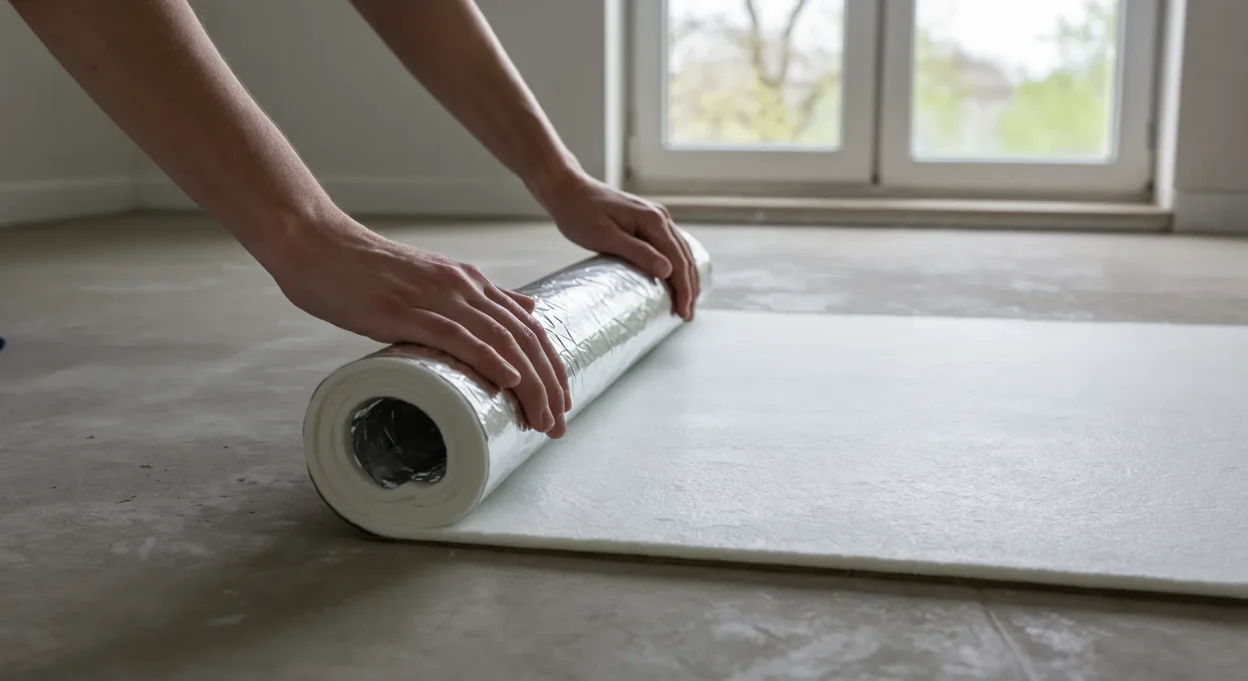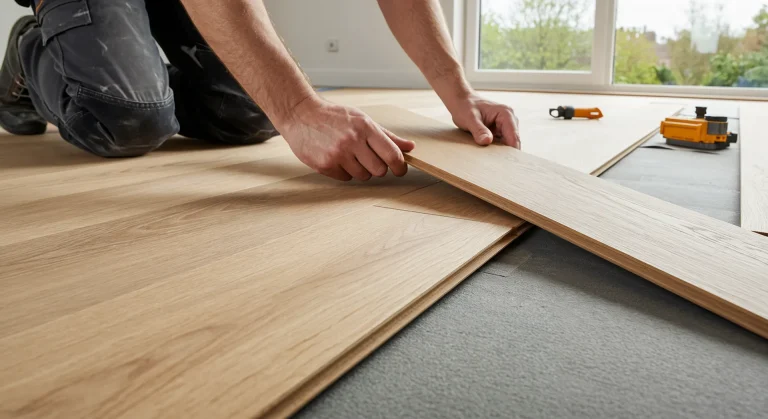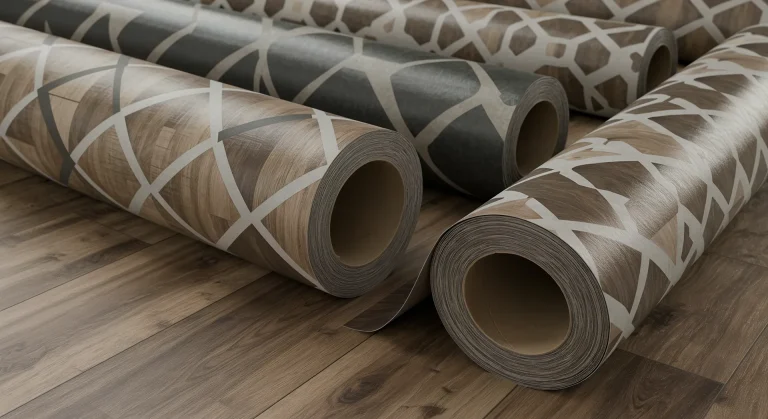Laminate flooring is a hugely popular choice for UK homes, offering stylish looks and practical durability at an affordable price point. However, the success and longevity of your new laminate floor don’t just depend on the planks themselves. Beneath the surface lies an unsung hero: the laminate underlay. This often-overlooked layer is absolutely crucial, playing a vital role in your floor’s performance, comfort, and lifespan. Choosing the right laminate underlay can make the difference between a quiet, comfortable, and long-lasting floor, and one that’s noisy, feels cheap, or succumbs to moisture damage.
This ultimate UK guide for 2025 will demystify laminate underlay. We’ll explore what it is, why it’s non-negotiable, break down the common types available, and provide expert advice on how to choose the perfect underlay for your specific needs – whether you have concrete or wooden subfloors, underfloor heating, or a desire for enhanced soundproofing. We’ll also cover installation basics and common pitfalls to avoid.
Jump to Section:
- What is Laminate Underlay and Why is it Non-Negotiable?
- Decoding the Layers: Popular Types of Laminate Underlay in the UK
- Focus on Subfloors: Underlay for Concrete vs. Wooden Bases
- Underfloor Heating (UFH) & Laminate Underlay: A Warm Topic
- Sounding Off: Best Underlays for Noise Reduction
- Matchmaker: Choosing the Perfect Laminate Underlay for Your UK Home (2025)
- How to Lay Laminate Underlay: A Quick DIY Guide
- Underlay Pitfalls: Common Mistakes to Avoid for a Flawless Finish
- The Impact of Underlay on Your Laminate Flooring’s Lifespan
- Laminate Underlay: The Unsung Hero of a Great Floor
What is Laminate Underlay and Why is it Non-Negotiable?
Laminate underlay is a thin, resilient layer of material installed directly onto the subfloor before the laminate planks are laid. Because laminate flooring is typically installed as a ‘floating floor’ (meaning the planks click together and aren’t fixed to the subfloor), the underlay performs several critical functions:
- Supports the Click System: It provides a slight cushion and crucial support for the interlocking joints of the laminate planks. This helps prevent them from flexing, creaking, separating, or breaking underfoot.
- Sound Insulation (Acoustics): Laminate can be inherently ‘noisy’ or ‘clicky’. Underlay significantly reduces impact sound (footsteps) transmitting to rooms below and lessens reflected sound within the room itself, leading to a much quieter environment. This is especially important in UK flats, apartments, or upstairs rooms.
- Thermal Insulation: It adds a layer of insulation, making the floor feel warmer underfoot, particularly over cold concrete subfloors common in many UK homes.
- Minor Subfloor Levelling: While not a substitute for proper subfloor preparation, a good quality underlay can smooth out very minor imperfections (e.g., tiny bumps or dips of 1-2mm).
- Moisture Protection (DPM): Many laminate underlays incorporate an integrated Damp Proof Membrane (DPM) or vapour barrier. This is essential when laying laminate over concrete ground floors in the UK to protect the laminate’s HDF (High-Density Fibreboard) core from rising damp, which can cause swelling and irreparable damage.
- Enhanced Comfort: The cushioning effect improves underfoot comfort.
Skipping underlay, or using an unsuitable type (like old carpet underlay), will almost certainly lead to a poor-performing floor, a voided flooring warranty, and the need for premature replacement.
Decoding the Layers: Popular Types of Laminate Underlay in the UK
The UK market offers various types of laminate underlay, each with specific properties:
PE Foam Underlay (Polyethylene Foam):
- Description: The most basic and often cheapest option, usually 2-3mm thick, supplied in lightweight rolls. Frequently comes with a silver or gold foil backing that acts as an integrated DPM.
- Pros: Affordable, very easy to handle, cut, and lay.
- Cons: Offers minimal sound and thermal insulation compared to other types. Can compress over time in high-traffic areas, reducing its effectiveness. Limited levelling capability.
- Best For: Budget projects, very level wooden subfloors (if no DPM needed), or concrete subfloors if a DPM-backed version is used in low-demand areas.
Fibreboard Underlay (Wood Fibreboard):
- Description: Dense, rigid boards, typically 3mm, 5mm, or 7mm thick. Made from compressed wood fibres.
- Pros: Excellent thermal insulation properties, good sound reduction (impact and ambient), superior at smoothing out minor subfloor undulations compared to foam, natural and breathable material.
- Cons: Not inherently moisture resistant, so a separate polythene DPM sheet is required when used on concrete ground floors. Can be more brittle to cut than foam.
- Best For: Wooden subfloors (especially uneven ones within limits), rooms needing good thermal and acoustic performance.
XPS Foam Underlay (Extruded Polystyrene):
- Description: Lightweight yet often rigid foam boards or fan-fold sections, typically 3mm-6mm thick. Sometimes known by brand names like “Depron” in the past.
- Pros: Good thermal insulation, effective sound dampening, good levelling properties for minor irregularities, often high compressive strength (resists crushing). Many have integrated DPM options.
- Cons: Can be pricier than basic PE foam.
- Best For: Cold subfloors (like concrete), areas needing a good balance of thermal and sound insulation with some levelling.
Sponge Rubber Underlay:
- Description: A denser, heavier, and more resilient material. Often considered a premium option.
- Pros: Excellent impact sound reduction (often the best for reducing noise transfer), very durable and long-lasting, provides superior comfort underfoot. Many have integrated DPMs (e.g., Duralay Timbermate Excel).
- Cons: Typically more expensive than foam or fibreboard, heavier and can be slightly more challenging to handle/cut.
- Best For: Upstairs rooms, flats, apartments, or any situation where noise reduction is a top priority. High-traffic areas due to its durability.
Cork Underlay:
- Description: A natural and sustainable material, usually supplied in rolls or sheets.
- Pros: Excellent thermal and acoustic insulation, very eco-friendly (renewable resource), durable, naturally resistant to mould and mildew.
- Cons: Generally one of the most expensive underlay options, can be more brittle to handle than foam. Requires a separate DPM on concrete.
- Best For: Eco-conscious homeowners, projects requiring high thermal/acoustic performance where budget allows.
Combination (Combi) Underlays:
- Many PE foam, XPS, and rubber underlays are available as “combi” products with a DPM already integrated, offering convenience for concrete subfloor installations.
Focus on Subfloors: Underlay for Concrete vs. Wooden Bases
The type of subfloor in your UK home is arguably the single most important factor dictating your choice of laminate underlay. Concrete and wooden subfloors have vastly different properties and potential issues that the right underlay must address.
Underlay for Concrete Subfloors (Especially Ground Floors):
Concrete is a common subfloor in many UK properties, particularly on ground floors or in newer builds and extensions. Its main challenges are coldness and potential for rising damp.
- Moisture Protection (DPM – Damp Proof Membrane): This is non-negotiable for concrete ground floors in the UK. Concrete is porous and can draw moisture from the ground, which will then be trapped under your laminate, leading to swelling, warping, mould growth, and irreparable damage to the HDF core.
– Solution: You must use an underlay with a high-quality integrated DPM (often a foil backing) or lay a separate heavy-duty (1200 gauge/0.25mm) polyethylene DPM sheet before your chosen underlay. The DPM should extend up the walls slightly to be covered by skirting.
– Even for upper concrete floors (e.g., in flats), a DPM is a wise precaution if there’s any doubt about residual moisture from the slab. - Thermal Insulation: Concrete feels inherently cold. An underlay with good thermal insulation (a higher Tog rating, unless you have UFH) will make a significant difference to comfort and can help reduce heating bills.
– Solution: XPS foam boards, thicker DPM-backed PE foams, or fibreboard (laid over a separate DPM) are good options for thermal bridging. - Levelling: While underlay helps with minor smoothness, concrete must be level (typically within 2-3mm over 2m) before laying. Use self-levelling compound for any significant dips or bumps.
Underlay for Wooden Subfloors (Floorboards, Chipboard, Plywood):
Wooden subfloors are common in older UK properties and on upper floors. Their main challenges are often unevenness and noise transmission.
- Moisture Protection: Generally, a DPM is not required or recommended for wooden subfloors on upper levels, as wood needs to breathe. Trapping moisture between two impermeable layers could cause issues for the subfloor itself. An exception might be a ground floor wooden subfloor over a poorly ventilated or damp crawl space – professional advice should be sought in such cases.
- Sound Insulation (Acoustics): This is often a primary concern, especially for upstairs rooms or in flats/terraced houses to minimise noise transfer to rooms below.
– Solution: Dense fibreboard underlay is excellent for impact and some airborne sound reduction. Sponge rubber underlays offer superior impact sound dampening. High-density XPS or specialist acoustic foam underlays are also effective. - Levelling & Stability: Older floorboards can be uneven. While underlay (especially fibreboard) can smooth out very minor variations, significant unevenness or springiness should be addressed first, often by overboarding with flooring-grade plywood (minimum 6mm) screwed down securely. This provides a stable, flat base for the underlay and laminate.
- Cushioning & Joint Support: All laminate underlays provide this, but a good quality, resilient underlay will better protect the laminate’s click system from stress caused by slight subfloor movement or foot traffic.
Regardless of subfloor type, ensure it is thoroughly clean, dry, and structurally sound before laying any laminate underlay.
Underfloor Heating (UFH) & Laminate Underlay: A Warm Topic
Underfloor heating (UFH) is an increasingly popular and luxurious feature in modern UK homes. If you’re planning to lay laminate flooring over a UFH system, selecting the correct laminate underlay is absolutely critical for the system’s efficiency and the floor’s longevity. Using the wrong type will, at best, make your heating ineffective and costly to run, and at worst, could potentially damage your flooring or UFH system.
- The Tog Rating Explained: The key factor here is the Tog rating, which measures thermal resistance – essentially, how much the material resists heat passing through it. For UFH, you need an underlay with a very low Tog rating. This allows the heat generated by your UFH system to transfer efficiently up through the underlay and laminate into your room.
– Typical recommendations for UFH underlay Tog values are often below 0.8 Tog, with some specialist products like Duralay Heatflow boasting Tog ratings as low as 0.35. The combined Tog value of your underlay AND the laminate flooring itself should not exceed the maximum specified by your UFH system manufacturer (often around 1.5 Tog total). - What to Choose: Look for laminate underlays specifically marketed and certified as “suitable for underfloor heating.” These are often:
– Thinner (e.g., 1.5mm – 3mm).
– Denser materials that conduct heat well.
– Sometimes perforated or grooved to aid heat transmission.
– Examples include certain low-Tog PE foams, specialist sponge rubber products (like Duralay Heatflow), or specific UFH-compatible fibreboards if available (though fibreboard naturally has higher insulation). - What to AVOID with UFH:
– High-Tog insulating underlays (e.g., standard thick fibreboard, standard XPS, thick PE foams, cork, regular rubber underlay). These are designed to keep heat in or out, so they will act as a barrier, preventing your UFH from heating the room effectively. This forces the UFH system to work harder, longer, and at higher temperatures, wasting energy and potentially overheating. - DPM Requirements: If your UFH is embedded in a concrete screed on a ground floor, you will still likely need a DPM. Choose a UFH-compatible underlay with an integrated DPM or lay a separate thin DPM sheet beneath the UFH underlay.
- Manufacturer Guidelines: Always, always consult the specific recommendations of both your laminate flooring manufacturer and your UFH system provider regarding compatible underlay types, maximum Tog values, and any specific installation requirements (like gradual heat-up protocols for new installations). Failure to do so can void warranties.
Choosing the correct low-Tog laminate underlay ensures you get the full comfort and efficiency benefits from your underfloor heating system, keeping your home warm and your energy bills in check.
Sounding Off: Best Underlays for Noise Reduction
One of the potential downsides of laminate flooring, if not properly addressed, is noise – both impact sound (footsteps, dropped items) travelling to rooms below, and reflected sound (the ‘clicky’ noise) within the room itself. A high-quality acoustic laminate underlay is essential for creating a quieter, more peaceful living environment, especially in UK flats, apartments, terraced/semi-detached houses, or even just for upstairs bedrooms.
- Understanding Sound Reduction Ratings: The effectiveness of an underlay in reducing impact sound is often indicated by a decibel (dB) rating. The higher the dB rating, the better the sound insulation. A reduction of 18dB is noticeable, while 20-22dB+ is considered very good.
- Best Underlay Types for Noise Reduction:
– Sponge Rubber Underlay: Generally considered one of the top performers for impact sound reduction due to its high density and resilient structure. It effectively absorbs the energy from footsteps. Brands like Duralay offer products like “Silentfloor Gold” specifically for this.
– Dense Fibreboard Underlay: The rigid, dense nature of fibreboard (wood fibre) also provides excellent impact sound reduction and can help dampen some airborne sound within the room too.
– High-Density XPS Foam / Specialist Acoustic Foams: While basic PE foam offers minimal acoustic benefit, higher-density XPS (Extruded Polystyrene) or specialist acoustic foam underlays are designed with sound dampening in mind and can achieve good dB ratings.
– Cork Underlay: Being a natural cellular material, cork has inherent sound-dampening properties and can be very effective, though often at a premium price. - What to Look For:
– Density: Denser underlays generally perform better for sound insulation.
– Thickness: While not the only factor, a reasonable thickness (e.g., 3-5mm for many acoustic types) helps, but an overly thick and soft underlay can compromise laminate joint stability. Balance is key.
– Manufacturer’s dB Rating: Check the product specifications for stated impact sound reduction figures. - Importance in Multi-Occupancy Dwellings: In UK flats or apartments, reducing noise transfer to neighbours below is often a leasehold requirement or simply good neighbourly practice. Investing in a good acoustic laminate underlay is crucial here.
- Consider the Whole System: Remember that sound reduction is about the entire floor system – a good acoustic underlay combined with a reasonably thick laminate (8mm+) will perform better than the same underlay with very thin (6mm) laminate. Proper subfloor preparation also plays a part in preventing creaks and squeaks that contribute to noise.
By selecting a laminate underlay with strong acoustic properties, you can significantly enhance the comfort and tranquillity of your home, making your laminate floor a pleasure to live with.
Matchmaker: Choosing the Perfect Laminate Underlay for Your UK Home (2025)
You’ve now explored the common types of laminate underlay available in the UK and delved into the specific requirements for different subfloors, the critical considerations for underfloor heating, and how to achieve effective noise reduction. With this knowledge, choosing the perfect underlay becomes a more informed process. Here are the final key checks and considerations to ensure you select the absolute best laminate underlay for your specific situation:
Laminate Manufacturer’s Specifications (The Golden Rule):
- Why it’s crucial: This is paramount. Your laminate flooring manufacturer will provide specific recommendations or requirements for underlay thickness (usually between 2mm and 5mm) and type. Adhering to these is often essential to keep your flooring warranty valid.
- What to look for: Check their datasheets or installation guides for approved underlay characteristics. Using an underlay that’s too thick or too soft/spongy (like carpet underlay) can put excessive strain on the laminate’s click-lock joints, leading to movement, gapping, or even breakage.
Recap Your Specific Needs (Based on Previous Sections):
- Subfloor Type: Have you confirmed the needs for your concrete (DPM essential!) or wooden subfloor, as detailed in our “Focus on Subfloors” section?
- Underfloor Heating (UFH): If applicable, have you selected a specialist low-Tog rated underlay, as explored in “Underfloor Heating (UFH) & Laminate Underlay”?
- Acoustic Requirements: If noise reduction is a priority (e.g., for flats or upstairs rooms), have you chosen an underlay with a suitable dB rating, discussed in “Sounding Off: Best Underlays for Noise Reduction”?
Overall Floor Height & Transitions:
- Consider the combined thickness of your chosen laminate underlay and the laminate flooring itself.
- Will this new height create issues with door clearances (doors may need trimming)?
- How will it transition to existing flooring in adjoining rooms? You’ll need appropriate threshold strips, and a significant height difference might require a ramped reducer.
Room Environment & Usage:
- While much of this is covered by subfloor type and UFH considerations, briefly re-evaluate the room’s specific environment. For example, a ground floor room in an older UK property that feels generally cold might benefit from an underlay with slightly better thermal properties (balancing with UFH if present). A child’s playroom might benefit from good impact sound reduction.
Budget Re-evaluated:
- When considering your budget, be aware that laminate underlay prices in the UK typically range from around £2-£5 per m² for basic PE foam options, while specialist acoustic, rubber, or premium fibreboard underlays can cost £7-£10+ per m².
- While it might be tempting to opt for the cheapest, balance this against the long-term performance and protection your floor needs. Investing a little more in a quality underlay appropriate for your situation (especially concerning DPM for concrete or UFH compatibility) is often a wise decision that pays off in comfort and floor longevity.
By thoughtfully working through these final checks, alongside the detailed information in the preceding sections, you can confidently select the laminate underlay that will best support your new flooring, enhance your home’s comfort, and ensure your laminate performs beautifully for years to come.
How to Lay Laminate Underlay: A Quick DIY Guide
- Prepare Subfloor: Ensure it’s thoroughly clean, dry, and as level as possible (address major issues first).
- Acclimatise (If Needed): Some underlays, like fibreboard, may benefit from acclimatising in the room for 24 hours. Check product instructions.
- Roll Out/Lay: Start in one corner of the room. Roll out PE foam or rubber underlay, or lay fibreboard/XPS boards. Many installers lay underlay perpendicular to the planned direction of the laminate planks, but follow specific product guidance.
- Edges & Seams:
– Butt the edges of each section of underlay closely together. Do not overlap standard underlay edges, as this creates an uneven surface, unless the underlay has a specific overlapping flap with adhesive tape designed for this purpose.
– Securely tape all seams using appropriate underlay tape (e.g., waterproof foil tape for DPM-backed types, general strong packaging tape for others). This creates a continuous, stable layer and maintains the integrity of any moisture barrier. - Perimeter: If your underlay includes a DPM, or if you’ve laid a separate DPM sheet, allow it to run slightly up the walls (approx. 50mm). This will be covered by skirting boards later and helps protect the floor edges from moisture.
- Obstacles: Cut the underlay neatly to fit around pipes or any other fixed objects.
Underlay Pitfalls: Common Mistakes to Avoid for a Flawless Finish
- Using No Underlay: The biggest mistake, leading to a noisy, uncomfortable floor with a high risk of joint damage and no moisture protection.
- Wrong Type: Using carpet underlay (too thick/soft), or non-DPM underlay on concrete, or high-Tog underlay with UFH.
- Too Thick: Exceeding the laminate manufacturer’s recommended underlay thickness can strain and break click joints.
- Overlapping Seams (Incorrectly): Creates ridges and an uneven base for the laminate unless designed for an overlap.
- Not Taping Seams: Allows movement, reduces sound/thermal efficiency, and compromises moisture barriers.
- Ignoring Subfloor Issues: Underlay can only mask very minor imperfections. Significant dips or bumps must be levelled before laying underlay.
The Impact of Underlay on Your Laminate Flooring’s Lifespan
A good quality, correctly chosen and installed laminate underlay is not just an optional extra; it’s a fundamental component that directly contributes to:
- Protecting Click Joints: Reduces stress and wear on the interlocking system.
- Preventing Moisture Damage: A DPM protects the HDF core from rising damp on concrete subfloors.
- Enhanced Durability: By providing a stable, supportive base, it helps the laminate withstand foot traffic and impacts better.
- Maintaining Appearance: Prevents issues like excessive noise, bounciness, or gapping that can make a floor feel cheap or poorly installed.
Laminate Underlay: The Unsung Hero of a Great Floor
While your laminate flooring might be the star of the show visually, the laminate underlay is the crucial supporting act working tirelessly beneath. It’s the unsung hero that ensures your floor feels comfortable, sounds quiet, stays protected from moisture (especially critical on UK concrete ground floors), and supports the integrity of the click-lock system for years to come.
Choosing the right underlay for your specific subfloor type (be it concrete or wooden boards), considering needs like underfloor heating compatibility or enhanced sound insulation common in many UK homes (from busy family houses to flats needing consideration for neighbours), and installing it correctly are vital steps. Don’t underestimate its importance; investing in a good quality, appropriate laminate underlay is investing in the long-term success and enjoyment of your beautiful new laminate floor.

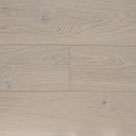 Light
Light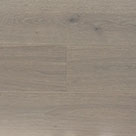 Grey
Grey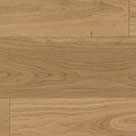 Natural
Natural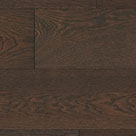 Dark
Dark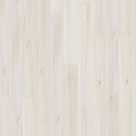 White
White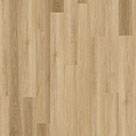 Light
Light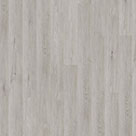 Grey
Grey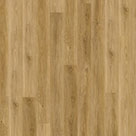 Natural
Natural Dark
Dark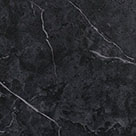 Black
Black